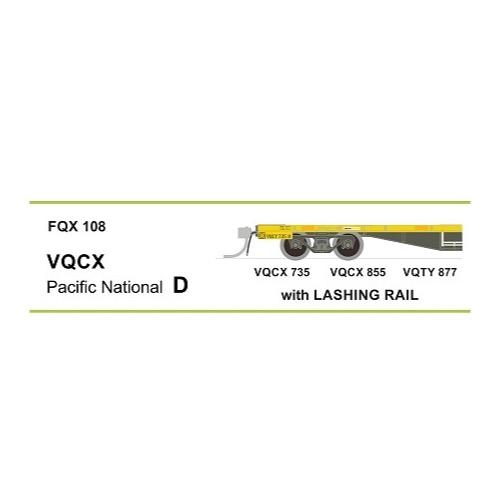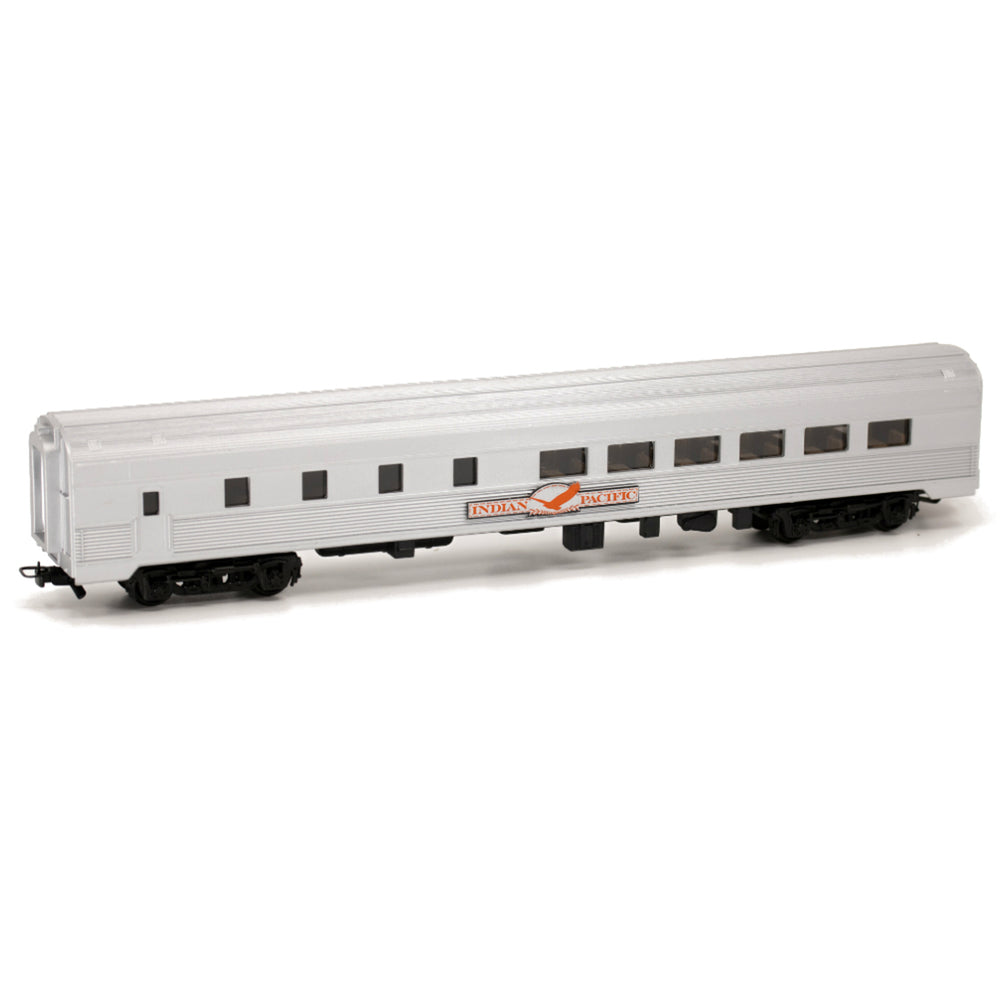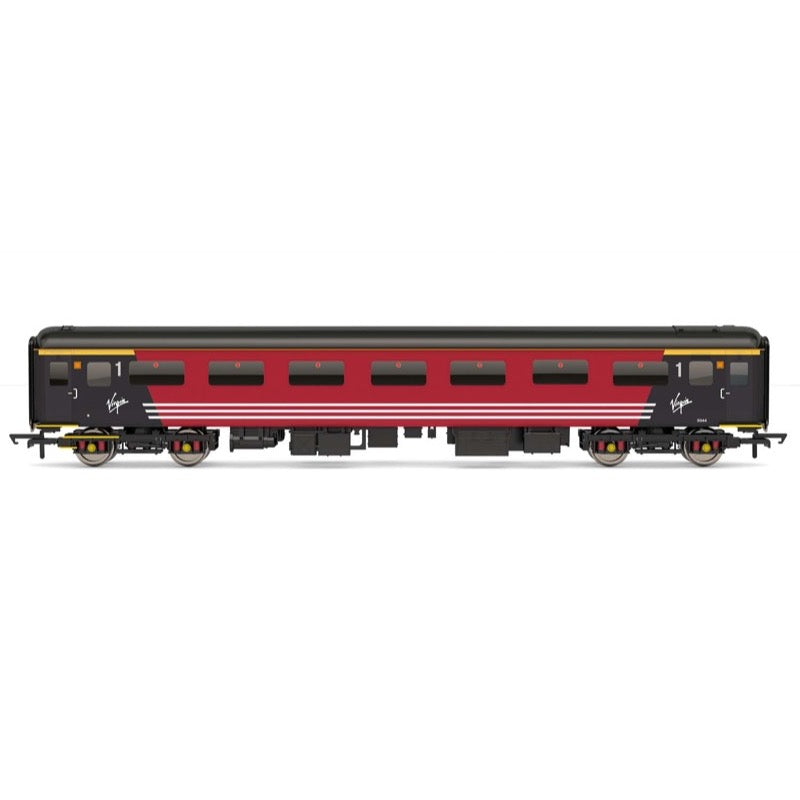
Hornby R4944A OO Virgin Trains Mk2F First Open 5946
The British Railways Standard Mark 2 coach was first introduced in 1963 and the semi-integral construction dispensed with a separate underframe, giving the body greater strength and stiffness than the previous BR Standard Mk.1 stock.
Certified for 100mph running, this was later increased to 110mph and the design of the coach evolved over the next ten years, culminating in the Mk.2F design that was built between 1973 and 1975; a stop gap measure produced until the British Rail Mk.3 coach could be introduced into service.
Virgin Trains used the Mk.2Fs, along with Mk.3s, on cross-country and mainline services right up until locomotive hauled services were curtailed.
Includes
- 1 x Rolling Stock Coach
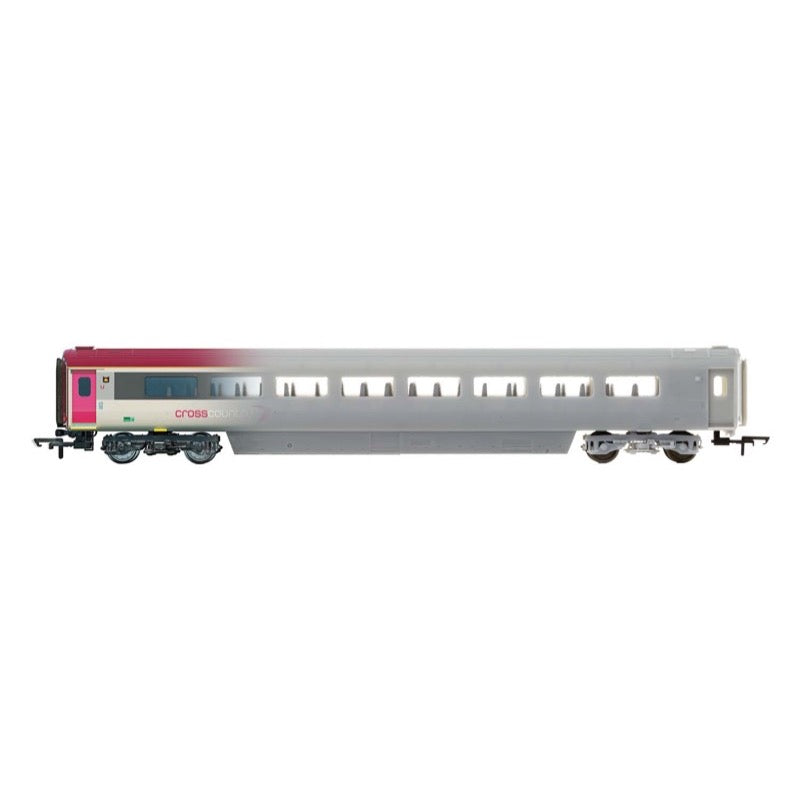
Hornby R4940D Cross Country Trains Mk3 Sliding Door TS - Era 11
Cross Country Trains, Mk3 Sliding Door TS 42378 - Era 11
Specification
- Item Scale: 1:76 Scale 00 Gauge
- Finish: Painted
- Gauge: OO
- Operator: CrossCountry
- Livery: Grey & Magenta
- Coupling: NEM / Tension lock

SDS Models HO HO VR OT 10000 Gallon Tank Car 3 Pack C
SDS Models HO HO VR OT 10000 Gallon Tank Car 3 Pack C
10000 Gallon Rail Tank Car Series OT / TW TWF / VQTF VQTY
SDS Models have produced a range of 10 000 gallon rail tank cars based upon a standard VR design 38 foot welded underframe. These HO Gauge models are presented with four unique, oil company specific, tank designs and accurately portrait the prototypical differences between each companies versions to meet their intended requirements. The models cover all major brands used in Victoria with the exception of the Shell Oil Company whose fleet rode on 36 foot riveted underframes.
The models are available in triple-packs and are categorised into three groups:
- OT - as delivered in the early 1950s to the early 1960s
- TW / TWF - 1960s to the late 1970s
- VTQA / VTQF / VTQY - 1980s and 1990s.
Model Features:
- Highly detailed Ready-to-Run HO scale model
- Injection moulded high quality plastic body
- Etched metal walkways
- Full brake rigging and underfloor detail
- Semi scale metal rimmed wheels
- OT bogie, 5’11” wheelbase with 36" diameter wheels
- Genuine Kadee #158 whisker coupler
- 18” Minimum radius recommended
Photos shown are representative of the finished model. Numbers and colours may vary on final product.
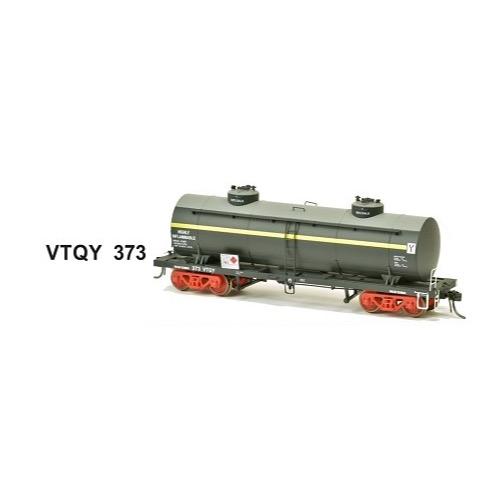
SDS Models HO VR VTQY 10000 Gallon Tank Car VTQY 373 Ex BP
10000 Gallon Rail Tank Car Series
SDS Models is producing a range of 10 000 gallon rail tank cars based upon a standard VR design 38 foot welded underframe. These HO Gauge models are presented with four unique, oil company specific, tank designs and accurately portrait the prototypical differences between each companies versions to meet their intended requirements. The models cover all major brands used in Victoria with the exception of the Shell Oil Company whose fleet rode on 36 foot riveted underframes.
The models are available in triple-packs and are categorised into three groups:
- OT - as delivered in the early 1950s to the early 1960s TW / TWF - 1960s to the late 1970s
- VTQA / VTQF / VTQY - 1980s and 1990s.
Model Features:
- Highly detailed Ready-to-Run HO scale model
- Injection moulded high quality plastic body
- Etched metal walkways
- Full brake rigging and underfloor detail
- Semi scale metal rimmed wheels
- OT bogie, 5’11” wheelbase with 36" diameter wheels.
- Genuine Kadee #158 whisker coupler
- 18” Minimum radius recommended
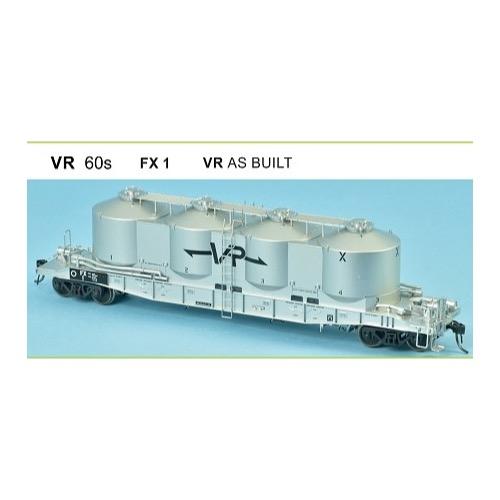
SDS Models VR FX Series 1 1960s FX1 As Built
FX / VPFX Bulk Flour Wagon
17 of these pneumatic discharge wagons were constructed between 1966 and 1971, they were numbered FX1 to 17. The first series FX 1 to 6 were built at Newport Workshops, the second series FX 7 to 17 were built at Ballarat North Workshops. The original series of wagons were designed so that two of the four hoppers were unloaded from each end. The second series differed from the first series by means of a single discharge point, via additional piping and manifold, at each end of the wagon. When the wagons were first delivered they were finished in silver with a small VR logo, later many of the series received flour company branding and some were also repainted white. Later their use was expanded to cover burnt lime (VPLX) and dried locomotive sand (VZGX).
Whilst coded FX denoting suitability for bogie exchange they were predominantly used on the broad gauge between Albury NSW and Williamstown Pier and Westall, in the mid-80s some ran on standard gauge to Enfield and Canberra.
Model Features:
- Highly detailed Ready-to-Run HO scale model
- Injection moulded high quality plastic body
- Etched metal walkways
- Full brake rigging and underfloor detail
- Semi scale metal rimmed wheels
- Genuine Kadee #158 whisker coupler
- 18” Minimum radius recommended

SDS Models HO HO VR TW 10000 Gallon Tank Car 3 Pack B
10000 Gallon Rail Tank Car Series
SDS Models is producing a range of 10 000 gallon rail tank cars based upon a standard VR design 38 foot welded underframe. These HO Gauge models are presented with four unique, oil company specific, tank designs and accurately portrait the prototypical differences between each companies versions to meet their intended requirements. The models cover all major brands used in Victoria with the exception of the Shell Oil Company whose fleet rode on 36 foot riveted underframes.
The models are available in triple-packs and are categorised into three groups:
- OT - as delivered in the early 1950s to the early 1960s TW / TWF - 1960s to the late 1970s
- VTQA / VTQF / VTQY - 1980s and 1990s.
Model Features:
- Highly detailed Ready-to-Run HO scale model
- Injection moulded high quality plastic body
- Etched metal walkways
- Full brake rigging and underfloor detail
- Semi scale metal rimmed wheels
- OT bogie, 5’11” wheelbase with 36" diameter wheels.
- Genuine Kadee #158 whisker coupler
- 18” Minimum radius recommended
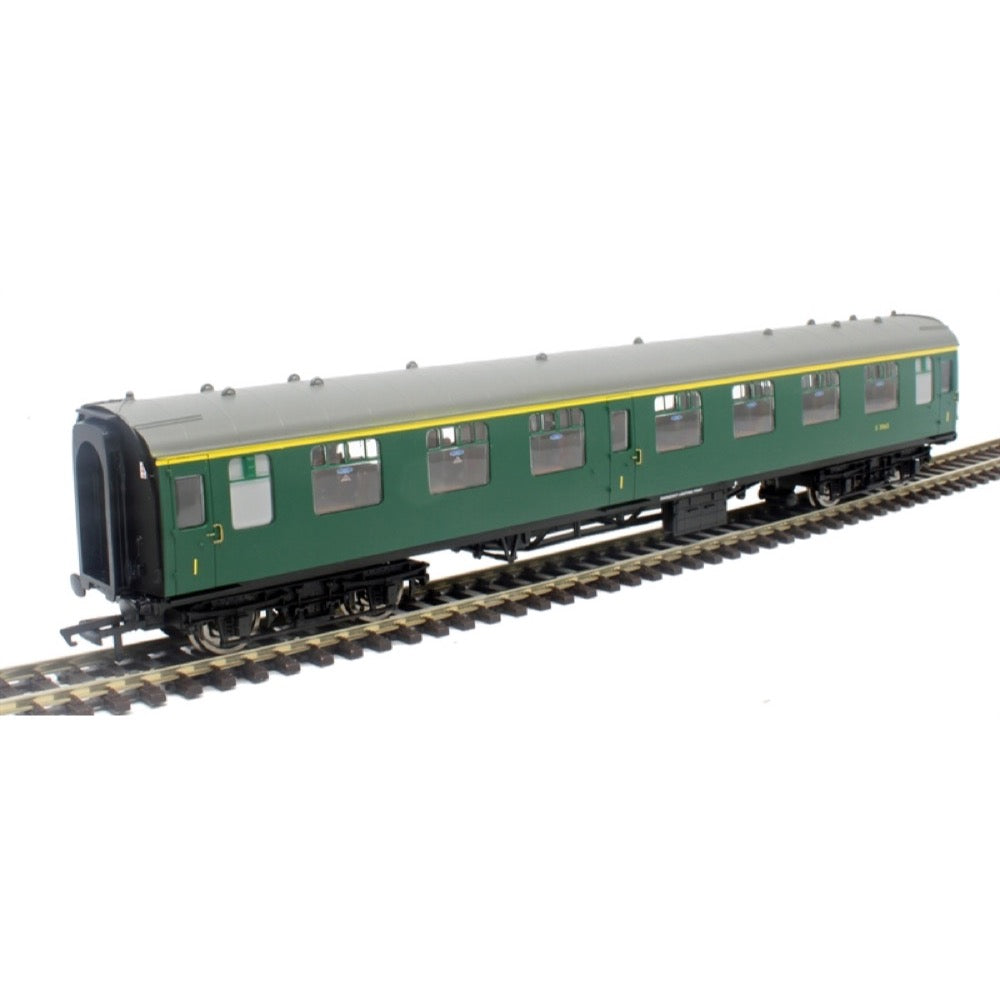
Hornby R4981 OO BR Southern Mk1 FO S3065 Green
The British Railways Standard Mark 1 coach was introduced in 1951 and, over a period of about ten years, the new fleet of coaches replaced pre-war designed rolling stock on most principal routes in the United Kingdom.
The design was used for passenger hauled stock, multiple unit carriages and non-passenger carrying stock; passenger stock construction taking place between 1951 and 1963, while multiple units and non-passenger carrying stock continued to be built until 1974.
The final withdrawal of Mark 1 stock from daily mainline use came in 2005. However, the type continue in mainline charter service, as well as on many heritage railways.
Includes
- 1 x Rolling Stock Coach
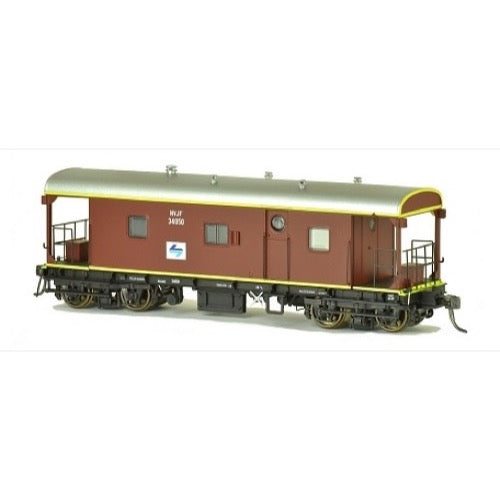
SDS Models 34050 HO NSW NVJA Guards Van
Guards Van
These were the last timber bodied Brake vans to be built by the NSWR, they were constructed on old PHG solebars with riveted bogie transoms and utilised plywood sides with end verandas.
The first two vans were built by Clyde Workshops in 1969-70 and numbered 34001 and 34002; 34001 was built with light draw gear, timber headstock and buffers, 34002 was built with light draw gear and a steel headstock. 34003 and 34004 featured a small extended draught box.
Subsequent Clyde Workshops production of JHG and UHG Brake vans between 1972-1977 featured heavy draw gear with extended draught box and a fully boxed welded centre beam chassis. There was some simplification to the timber side detail from JHG 34014 onwards with the lower edge of the side sheet finishing flush with the end platform deck. Our model is based upon the series of van from 34014-34100.
JHG vans were built with plain bearing leaf spring 2SA style bogies and UHG vans were built with roller bearing coil sprung 2AT style bogies. UHG vans were also fitted with through Main Reservoir piping and bifurcated hoses. This was for the supply of air for pneumatic discharge hopper doors.
Our model is also fitted with a, red only, LED source and has acrylic runners moulded on the underside of the end canopies and into the upper marker lamps. The underside of the model has a 3 position Centre Off switch to allow for the marker lamps to be lit at either end.
Features
- Highly detailed Ready-to-Run HO scale model
- Injection moulded high quality plastic body
- Metal detail parts
- Full brake rigging and underfloor detail
- Semi scale metal rimmed wheels
- Working marker lights.
- Genuine Kadee #158 whisker coupler
- 18” Minimum radius recommended
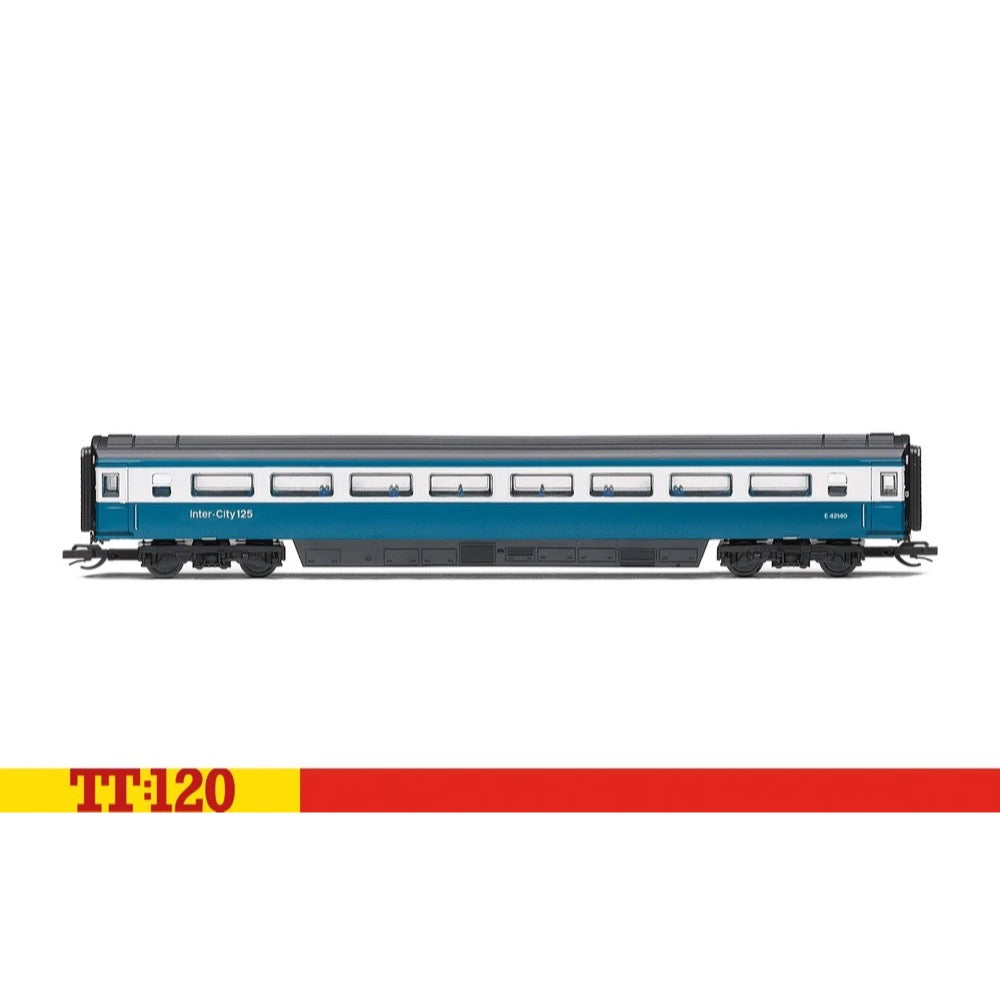
Hornby TT4023A TT BR Intercity Mk3 Tourist Standard Open E42140
In-order to allow running at 125 mph on Britain's Victorian era railways, new rolling stock was needed by British Railways. Significant improvements over the Mk2 included new secondary air suspension between the bogies and the coach body as well as aerodynamic skirting on the underframe.
Mk3 coaches are 75ft (23m) long, enabling far greater capacity than older coaches. Mk3 coaches also incorporate disk brakes and wheel slip protection enabling faster deceleration. The first Mk3 coaches to be delivered were used as part of the HST prototype along with the two Class 41 diesel power cars in 1972. Mk3 coaches entered service in 1975 along with the Class 43 forming the iconic InterCity 125 trainset. After the HST Mk3 coach variant was introduced, further Mk3 coaches were introduced to the West Coast Mainline for use as part of locomotive hauled trains. Whilst Mk3 stock is standard for HST units, the standard locomotive hauled stock is Mk3a. Mk3a stock differs from Mk3 stock due to the inclusion of buffers as well as a different electrical system that uses motor generator units in each coach to power air conditioning and other ancillaries Mk3a stock was built until 1984, before 3B stock with improved seating and lighting was built from 1985 to 1988.
The Mark 3 coaches were introduced into service with the Class 43s as the Intercity 125 service. This top flight service was dressed in a variation of BR Blue with a grey window surround. The Class 43s would be painted in a complimentary colour scheme with yellow noses for safety reasons. The Mark 3 coaches would continue in service in this scheme until the late 1990s. In preservation, some of these coaches have had this distinctive livery reapplied.
Specifications
- Item Length - Without Packaging (cm): 19
- Item Height - Without Packaging (cm): 2.2
- Item Width - Without Packaging (cm): 2
- Item Weight - Without Packaging: 0.05
- Item Scale: 1:120 Scale
- Finish: Painted
- Colour: Multiple
- Gauge: TT
- Operator: BR
- Designer: BR
- Livery: BR Blue and Grey
- Minimum Curve (mm): Radius 1
- Number of Parts: 1
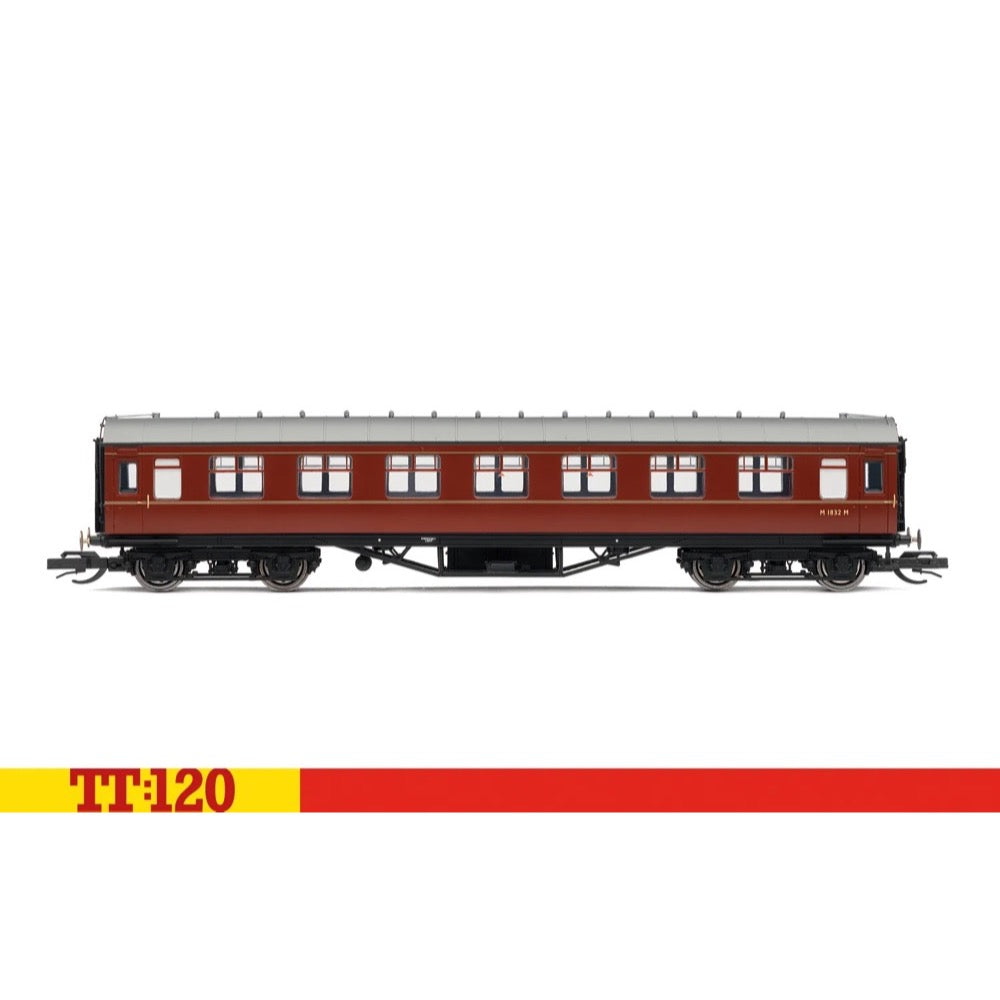
Hornby TT4033 TT BR 57 Corridor Third M1832M
At the start of the 1930s the LMS abandoned the ‘Small Engine Policy that it had inherited from one of its largest predecessors, the Midland Railway. The abandoning of this policy led to some of the most famous Stanier and LMS designs such as the Jubilee, Black 5 and Duchess classes. To accompany this shift in ethos, new coaches were constructed for the LMS, with the 57’ coaches being built between 1931 and 1932.
These new coaches were steel clad, the first such for the LMS and had seating for 56, 300 such examples were built. In LMS service these coaches were painted in their striking maroon livery with LMS insignia adorning the side. The coaches, being relatively new at the time of nationalisation lasted well into the swansong days of BR, appearing in both its carmine and cream livery and later BR Maroon when BR decided to shift aesthetics back to regional recognition.
Specifications
- Item Length - Without Packaging (cm): 14.4
- Item Height - Without Packaging (cm): 3
- Item Width - Without Packaging (cm): 2.2
- Item Weight - Without Packaging: 0.04
- Item Scale: 1:120 Scale
- Finish: Painted
- Colour: Maroon
- Gauge: TT
- Operator: BR
- Designer: Sir William Stanier
- Livery: BR Maroon
- Minimum Curve (mm): Radius 3
- Number of Parts: 1


